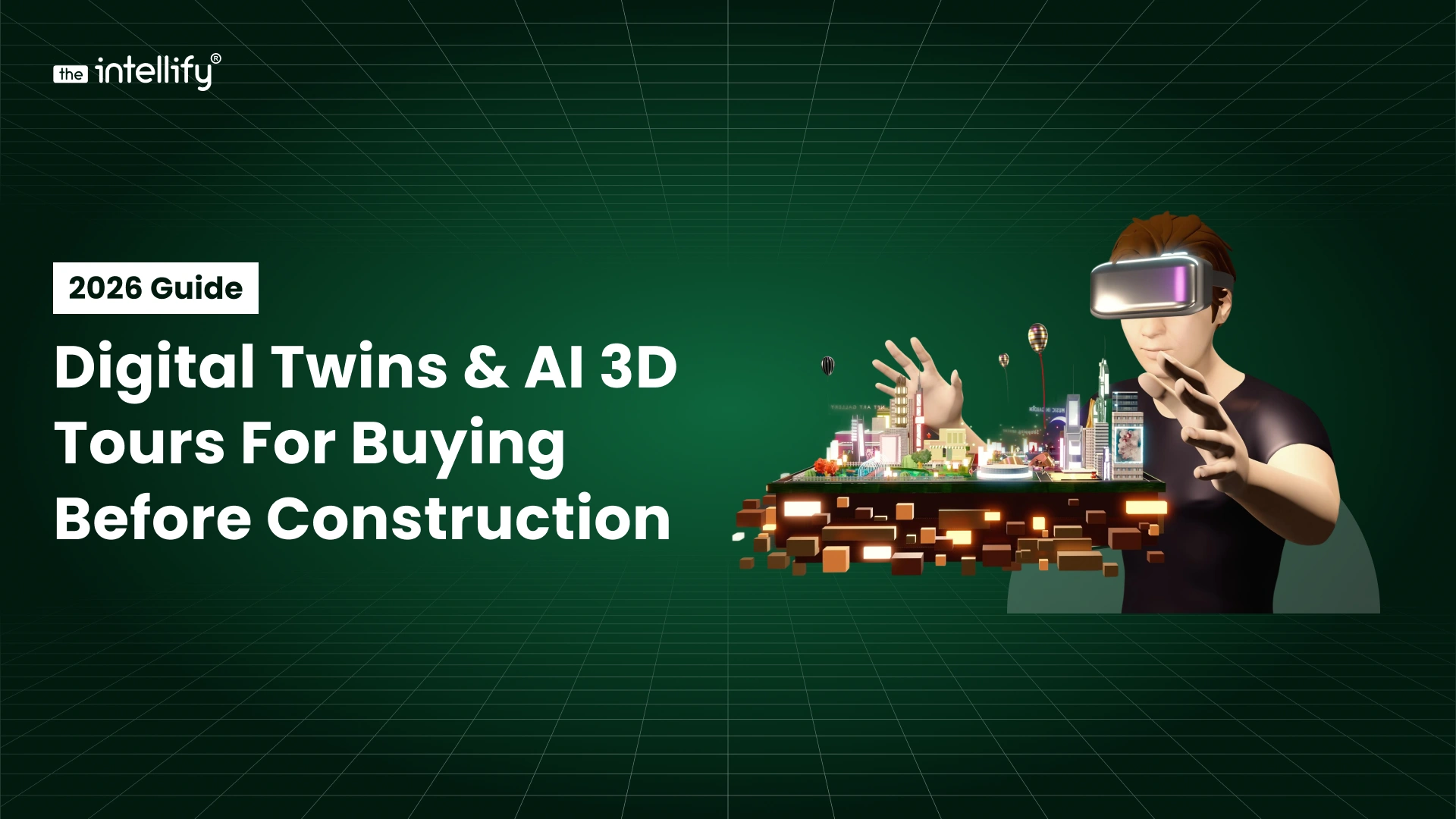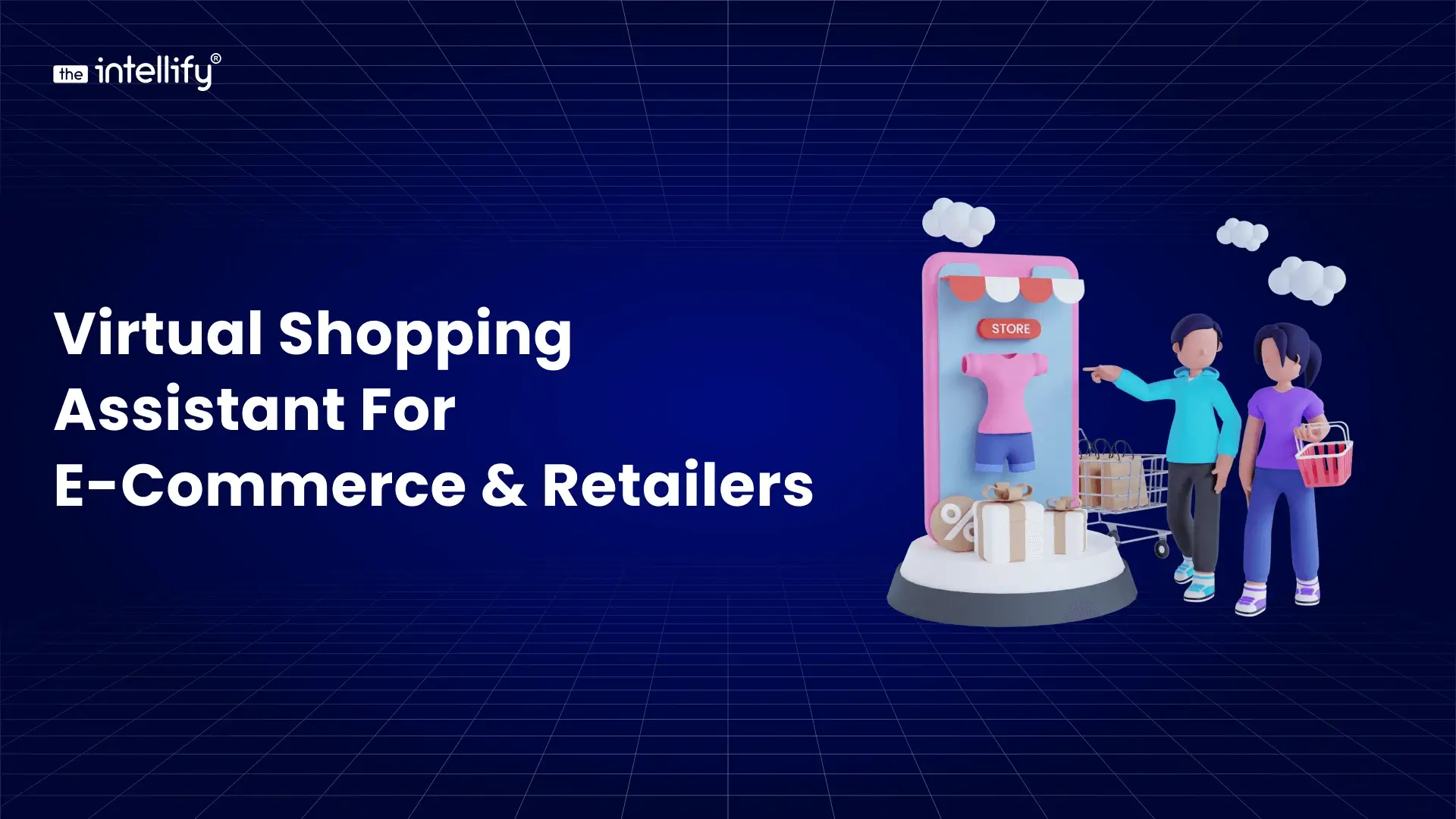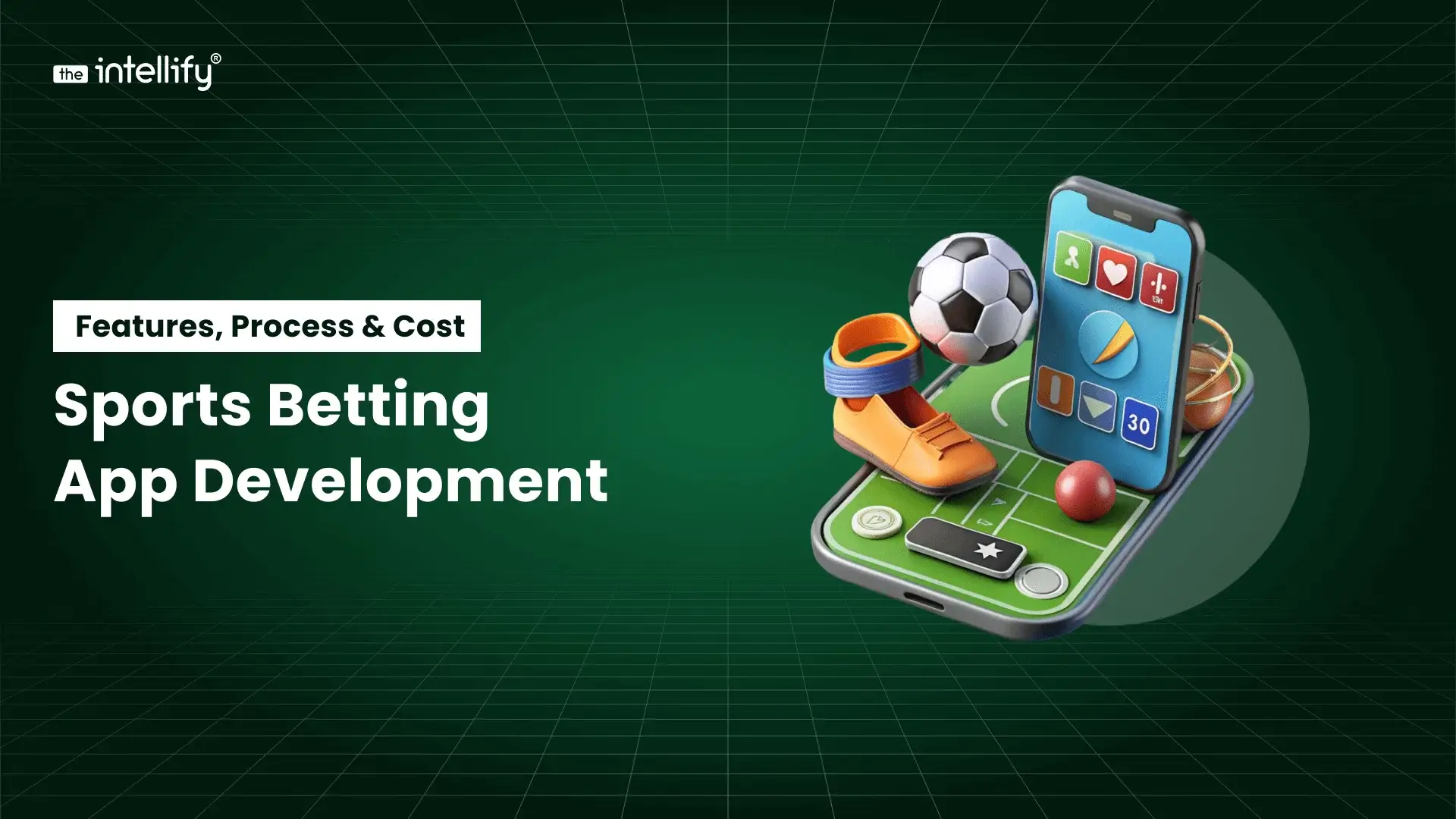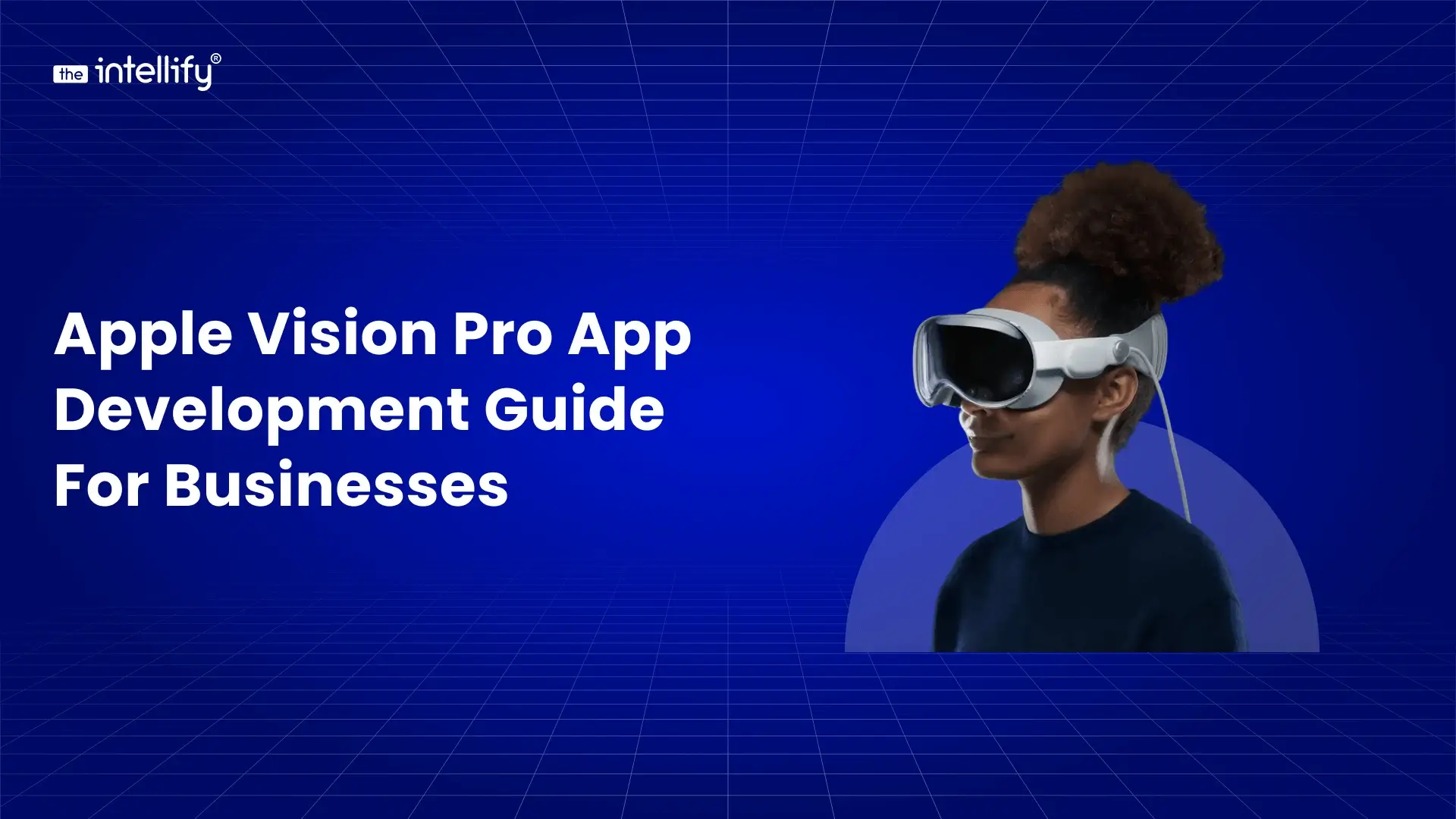2026 Guide: Digital Twins & AI 3D Tours for Buying Before Construction

By Jalaj Shah
October 6, 2025

Quick Executive Summary
Digital twins, combined with AI-driven 3D tours, transform off-plan marketing from guesswork into a measurable sales engine, enabling faster qualification, stronger buyer confidence, and higher conversion rates for developers. This 2026 guide gives a practical playbook for capturing standards, distribution recipes, vendor criteria, KPIs, legal safeguards, and a rollout plan to start selling off-plan with digital-first certainty.
Introduction: Why developers care in 2026
Off-plan sales are high-stakes: buyers commit before physical completion, and developers must clearly communicate their vision, the quality of the finish, and the living experience. Digital twins (accurate, interactive digital replicas of buildings) paired with AI-enhanced 3D tours now let buyers explore layouts, test finishes, and see realistic lighting and circulation all before construction starts. This reduces buyer hesitation, shortens decision windows, and supercharges remote investor outreach. Recent platform innovations and market growth make this investment practical and revenue-positive for most projects.
What are digital twins and AI 3D tours? (short, plain language)
- Digital twin: a precise, interactive digital replica of a building or apartment that can include geometry, materials, systems, and metadata (floor plans, schedules, energy figures). Think of it as the property’s “digital double” that can be walked through and interrogated.
- AI 3D tour: an immersive walkthrough generated and enhanced by AI, improving measurement accuracy, auto-labelling rooms, creating guided tours, or producing photorealistic renderings and staging in seconds. AI speeds production and personalises experiences for buyers.
Together, these technologies let you simulate the finished product, iterate finishes live, and create purchase confidence without multiple on-site visits.
Why off-plan sales are an ideal use case

- Visualising the future: Buyers can switch finishes, furniture layout, and lighting scenarios to judge fit for their needs. This reduces the uncertainty that normally blocks early deposits.
- Remote decision-making: Overseas investors and busy buyers can assess units end-to-end without travel, reducing time to offer and allowing developers to sell across geographies.
- Marketing efficiency: A single digital twin becomes the canonical asset across listings, email, social, and sales suite, lowering repeated capture costs and increasing message consistency.
- Data-driven design tweaks: Digital twins deliver analytics on which spaces buyers explore and which finishes convert, enabling rapid, evidence-based marketing or product tweaks.
Market reality: why invest now (key evidence)
- The global virtual tour and digital twin markets are expanding rapidly, with forecasts showing strong CAGR into the late 2020s as hardware, AI, and software costs fall and adoption rises. Use this momentum to get ahead of competitors.
- Industry platforms report measurable uplifts: properties with detailed digital twin or 3D tour assets see materially higher inquiry rates and faster lead-to-contact timelines. That tangible lift supports ROI modelling for capture budgets.
- New low-cost AI tools now generate usable, shareable 3D experiences in minutes for many property types, shrinking the time/cost barrier for medium-sized developers.
(Use these data points when you pitch internal stakeholders: the market is moving, tech is cheaper, and buyer behaviour favours immersive assets.)
Buyer psychology: what digital twins change
- Trust through transparency: When buyers can toggle finishes and see accurate measurements, perceived risk falls. That leads to faster commitment and fewer post-purchase disputes.
- Emotional engagement: Immersion drives emotional ownership; buyers imagine living in the space more vividly than with photos or static renders.
- Friction reduction: Remote buyers are more likely to progress from interest to offer when a guided AI 3D tour reduces ambiguity and travel needs.
A practical, conversion-focused playbook (step-by-step)
This playbook is engineered for marketing and sales teams to be measurable and repeatable.

Step 0: Decide scope & goals.
Define what success looks like: deposit rate for off-plan launches, time-to-offer, or lead conversion from specific markets. Set baseline KPIs before capture.
Step 1: Capture & build the twin.
- Use developer architectural models (BIM/Revit) as the starting point; if not available, do a high-fidelity scan of the show unit. Convert models into an interactive twin with accurate materials and metadata.
- For multiple unit types, build a parameterised twin that supports rapid finish swaps and furniture schemas.
Step 2: Enhance with AI
- Use AI to auto-generate room labels, measurement overlays, and staging variants. AI can also create short guided scripts highlighting selling points for different buyer personas.
Step 3: a packaging for sales and marketing
- Create versions for: 1) public listing embed (lightweight), 2) gated investor preview (high fidelity), 3) live sales demo (highest fidelity with guided walkthrough).
- Include an option to “toggle finishes” and “see at dusk/day” to show real-life conditions.
Step 4: Distribute & qualify
- Embed the lightweight twin on listing pages, send gated links to qualified leads, and use a guided virtual tour with a sales rep for high-value prospects. Track completion and interaction depth to score leads automatically.
Step 5: Close & document
- For buyers who commit off-plan, provide a personalised digital handover pack: unit twin, chosen finishes, warranty schedules, and a timeline for construction milestones. This reduces churn and builds trust.
Vendor & tech selection checklist (short)
- Input support: Accepts BIM/Revit import or can build twins from CAD/architectural models.
- AI features: auto-labelling, virtual staging, lighting simulation, and measurement accuracy.
- Embed & performance: produces a lightweight web player for public pages and a high-fidelity viewer for gated demos.
- CRM & analytics: direct integration with CRM, event-level analytics for tour interaction, and conversion scoring.
- SLA & processing times: vendor offers predictable publish times (target: <72 hours for a new unit twin).
- Compliance features: watermarking, capture date, and virtual-staging disclaimers.
Top platforms and tools you should evaluate: Matterport and other digital twin vendors, AI rapid-tour tools (CubiCasa), and flexible tour hosts (CloudPano and equivalents).
Production standards capture checklist (practical)
- Confirm the architectural model or measure the show apartment.
- Verify daylight and night lighting variations.
- Prepare finish libraries (wall paint, flooring, joinery options).
- Create furniture layouts for occupant and investor personas.
- Check accurate metadata: unit number, area, parking, service charges.
- QA: measurement checks, navigation flow, mobile responsiveness.
Distribution recipes that convert
- Launch email: gated high-fidelity preview for broker partners and investors. CTA: “Book a guided 10-minute walkthrough”.
- Portal listing: lightweight twin embed + “Request private demo” button.
- Paid acquisition: run ads optimised for tour completion rather than clicks to maximise qualified leads.
- Sales motion: require that every onsite lead who tours the twin receives the full digital handover pack within 24 hours.
KPIs & reporting (must-track metrics)
- Time to publish: hours between model delivery and twin publish (target <72 hrs).
- Tour completion rate: % of viewers who interact with >50% of the twin.
- Qualified leads from twin: % of tour viewers who become MQLs.
- Conversion to deposit: % of MQLs who place an off-plan deposit.
- Time to offer: median days from first tour to deposit/offer.
- Churn/dispute rate: post-handover changes or complaints tied to representation accuracy.
Set weekly dashboards for the first 90 days post-launch and iterate.
Legal & compliance off-plan visualisation rules (critical)

- Clearly disclose assumptions: if renders or twins include finished surfaces, state which elements are illustrative vs contractual.
- Capture date & versioning: show capture or model version date on every tour and in all sales packs to avoid disputes.
- Virtual staging disclosure: if furniture or finishes are digitally inserted, include an explicit note or toggle to view the raw model.
- Regulatory references: ensure all off-plan promises align with developer contracts and local disclosure laws. Consult counsel before using twins as contractual references.
These controls protect reputation and reduce post-sale disputes.
The ROI model is simple math you can use
Estimate expected uplift using three levers:
- Lead quality improvement (LQ): percentage lift in qualified leads after twin introduction.
- Conversion uplift (C): percentage increase in MQL→deposit conversion.
- Speed multiplier (S): reduction in average days-to-offer (value is in faster cash flow).
Example (conservative): 20% LQ × 15% C × 25% faster closes = measurable incremental revenue that often covers capture + platform costs within one or two projects. Use your historical funnel numbers to plug in concrete values.
Case examples & platform notes
- Matterport & partners: market materials show digital twin properties get higher inquiry rates and increased engagement, a good example of enterprise adoption and measurable uplift. Use platform case studies when negotiating budgets.
- Low-cost AI tools: new entrants like CubiCasa produce usable, interactive tours quickly and cheaply, excellent for early-stage marketing or large volumes of unit types. These tools lower the marginal cost per unit twin.
Common objections and crisp responses (copy for sales)
- “Digital twins are expensive.” Use a pilot: twin 5 representative unit types; measure impact; scale if conversion improves.
- “Buyers won’t trust a digital model.” Provide measurement sheets, model version dates, and offer live guided demos with sales reps to build immediate confidence.
- “The tech will go out of date.” Twins are versioned assets. Update finishes or materials as the project evolves; the twin remains valuable for operations and handover after completion.
Rollout plan: 8-week minimum viable program
Week 1: define KPIs, select 3 pilot unit types, and choose vendors.
Week 2–3: build twins for prototypes / show unit using BIM or scan.
Week 4: integrate Twin with CRM and set tracking.
Week 5: soft launch to broker network and investors; collect feedback.
Week 6: run paid tests optimised for tour completion and measure lead quality.
Week 7: refine presentation and add finish toggles.
Week 8: scale to remaining unit types and publish a case study for seller acquisition.
Conclusion: The Future of Off-Plan Sales Is Already Here
As we enter 2026, digital twins and AI-powered 3D tours are no longer experimental toolsthey are fast becoming the gold standard for off-plan property sales. For developers, these technologies reduce buyer hesitation and shorten decision timelines. For agents, they unlock new ways to engage with international investors who expect transparency, precision, and speed. And for buyers, they transform what was once an abstract promise into a tangible, confidence-building experience.
The most successful real estate companies in the Middle East, Europe, and beyond will be those that adopt a hybrid model, where digital innovation replaces the human touch. By combining digital twins for accuracy, AI-driven personalisation for engagement, and 3D tours for immersive visualisation, you don’t just market properties create trust, clarity, and urgency that drive sales.
If you’re planning your 2026 off-plan sales strategy, the question is no longer whether to adopt these tools, but how quickly you can integrate them into your workflows. The sooner you embrace this shift, the stronger your competitive advantage will be.
High Demand FAQs
-
What is a digital twin in real estate?
A digital twin is an accurate, interactive digital replica of a unit or building that includes layout, materials, and metadata so buyers can explore and evaluate a property virtually.
-
How are AI 3D tours different from standard virtual tours?
AI 3D tours auto-label rooms, speed up measurement accuracy, enable instant virtual staging, and personalize guided paths, making tours faster to produce and more useful for decision makers.
-
Can buyers make off-plan deposits after viewing a twin?
Yes. Many buyers commit after guided twin demos. Best practice is a final verification step (live video or staged inspection) before contract execution.
-
How long does it take to create a unit digital twin?
If a BIM/CAD model exists, a twin can be published in days. If starting from a show unit, expect 48–72 hours for a production twin; higher fidelity or many units may take longer.
-
What does creating a pilot program cost?
Costs vary by fidelity. Basic interactive twins are economical; LIDAR/high-fidelity twins cost more. Start with 3 representative unit types and measure ROI.
-
Will digital twins replace show apartments?
No. Twins reduce the number of physical visits and improve qualification. Show apartments remain useful for tactile checks and final negotiations for premium buyers.
-
Are twins accurate for measurement and legal use?
High-quality twins built from BIM or precision scanning produce highly accurate measurements. Always include a certified measurement sheet for contractual uses.
-
Can we change the finishes in the twin?
Yes, a major benefit is finish toggles. Buyers can test flooring, paint, and cabinetry options to visualise the final result.
-
How do digital twins impact pre-launch marketing?
Twins increase engagement, enable remote investor pitches, and let you test pricing and finishes faster through data on buyer interactions.
-
What legal safeguards should we add to twin presentations?
Display capture/model version dates, disclaimers about illustrative elements, and link to approved finish schedules and contract terms.

Written By, Jalaj Shah
The COO and Co-Founder of The Intellify. Jalaj enjoys experimenting with new strategies. His posts are fantastic for businesses seeking innovative development ideas. Discover practical insights from his engaging content.


How to Build an AI-Powered Marketplace App: Development Guide
Summary: Building an AI-powered marketplace app isn’t just about coding it’s about crafting a smarter buying and selling experience. This guide breaks down everything from research and design to choosing the right tech stack, integrating AI tools, and launching successfully. Learn how personalization, chatbots, and analytics can set your marketplace apart and future-proof your business […]


Virtual Shopping Assistant for E-commerce & Retailers
Summary: Ever wished your online store could greet shoppers like a real person would? That’s the magic of virtual shopping assistants. They chat, recommend, and even remember what customers like, turning casual visitors into confident buyers. In this blog, we’ll unpack how these AI helpers are changing e-commerce and why partnering with The Intellify might […]


Sports Betting App Development: Features, Process & Cost
Summary: This blog offers a complete guide to sports betting app development, explaining how to create a secure, feature-rich, and user-friendly betting platform. It discusses essential features like live betting, multiple payment options, and responsible gambling tools, along with the full development process, cost factors, and future trends such as AI, AR/VR, and blockchain integration. […]


Apple Vision Pro App Development Guide for Businesses
Summary: This blog breaks down Apple Vision Pro app development in a simple, practical way for businesses exploring AR and VR app solutions. It explains what the device can do, where it fits across industries like healthcare, retail, education, and real estate, and how the full development process works from concept to launch. You’ll also […]


How to Build an AI-Powered Marketplace App: Development Guide
Summary: Building an AI-powered marketplace app isn’t just about coding it’s about crafting a smarter buying and selling experience. This guide breaks down everything from research and design to choosing the right tech stack, integrating AI tools, and launching successfully. Learn how personalization, chatbots, and analytics can set your marketplace apart and future-proof your business […]


Virtual Shopping Assistant for E-commerce & Retailers
Summary: Ever wished your online store could greet shoppers like a real person would? That’s the magic of virtual shopping assistants. They chat, recommend, and even remember what customers like, turning casual visitors into confident buyers. In this blog, we’ll unpack how these AI helpers are changing e-commerce and why partnering with The Intellify might […]
0
+0
+0
+0
+Committed Delivery Leads To Client Satisfaction
Client Testimonials that keep our expert's spirits highly motivated to deliver extraordinary solutions.



















